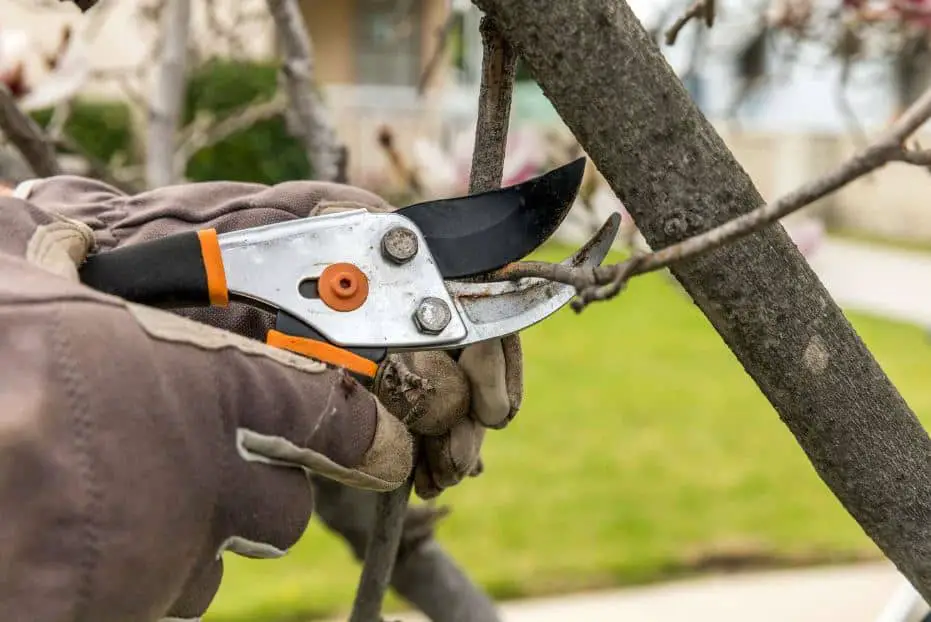The greatest approach to introducing a magnolia tree to your landscape begins before you ever plant anything. You must choose a location to support the tree’s mature growth. Many of us find it hard to imagine that the little, immature tree would eventually reach 30 or 50 feet (9-15 meters). This may cause a huge tree to grow in an inadequate space.
Do you agree with the gardeners who remark, “My magnolia tree is too big!” In such cases, pruners are your best option. Continue reading for advice on pruning a large magnolia tree.

Trimming a Large Magnolia Tree
Although there are several kinds of magnolia trees, they may be classified as deciduous or evergreen. Evergreen trees have significantly thicker leaves that they keep all year, whereas deciduous trees shed their foliage in the winter.
The optimal time to trim a deciduous magnolia is in the late summer when the leaves are completely open, especially between midsummer and early fall. On the other hand, evergreen kinds need to be clipped in the spring.
What about animals raised against a wall? After they have finished blooming in the summer, trim them back. You’ll need a sturdy step ladder, a pruning saw, and a clean, sharp pruner to prune any magnolia tree.
Young Trees: Pruning a Magnolia
When deciding how to prune your magnolia tree, two things are crucial: 1) How old it is; 2) if it is an evergreen or deciduous tree. Young deciduous trees need to be pruned, whereas young evergreen trees—including the well-known Southern magnolia—don’t. Any branches that seem flimsy or alter the tree’s form should be cut off.
When deciduous magnolias, such as the lovely star magnolia, are young, cut off any branches or weak growth that throws off the general form.
Older Trees: Pruning a Magnolia
Older deciduous magnolias need a little more pruning. Use your pruners to remove damaged or dead branches and maintain the tree’s form. You may achieve an open crown and a consistent shape by trimming branches back to a fork or the trunk. Vertical water shoots that sprout on mature deciduous trees also need to be removed. Reduce them to the branch or trunk.
Older evergreen magnolias are a possibility. Like deciduous trees, these must be trimmed to remove sick, damaged, or dead branches. Additionally, they may be cut to the desired form.
Pruning options for wall-grown magnolias are clear-cut. Trim off any stems that are extending into or toward the wall. Only a little pruning is necessary for stems to spread away from the wall. Remove everything except one or two leaves.
Remember that most magnolias marketed commercially are grafted plants created by joining a rootstock to a scion of a different species. Trim any branches that emerge from the rootstock plant after locating the graft line on the lower trunk. These have base sprouts.
Overgrown Trees: Pruning a Magnolia
Overgrown trees, or trees that haven’t been trimmed regularly in the past, must be pruned according to certain guidelines. While it may be tempting, it is not a good idea to significantly “haircut” the tree while you are at it. The tree could get too stressed as a result.
How should an overgrown star magnolia or any other plant that requires many branches to be cut off be pruned? If extensive pruning is required, schedule it over several years to reduce the strain on the tree. Instead, plan to prune part of the extra branches every year and some the next two years. As a result, the tree has a chance to heal from the injuries.


